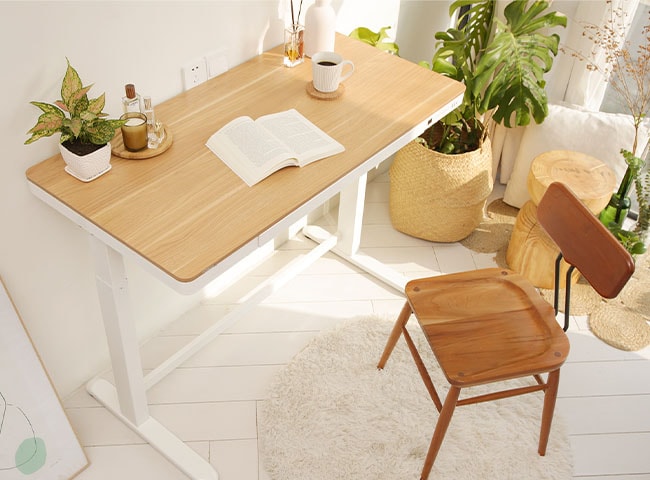Standing desks are closer than ever to becoming mainstream pieces of office furniture, and there's every reason to celebrate that. After all, having a reasonable alternative to traditional seated desks is essential to meet the needs of all employees.
It seems that there are plenty of payoffs for switching to a standing desk for the workplace. Benefits are said to boost health, office relationships, and productivity levels. However, avoid assuming that switching from a traditional seated office space is as simple as standing up.
Unless a problem hits, we rarely give much thought to everyday life maintenance tasks like eating, drinking, walking, and standing. These are things that we simply get on with. However, being able to do something doesn't actually guarantee we are doing it correctly.
Here, our focus is on essential tips to help avoid people's bad habits when using a standing desk. Of course, these ideas are just as valuable for tackling situations where bad habits have already taken hold.
Why Standing Properly Matters
The simple explanation is that it's good for your health to stand correctly. It helps avoid health problems like backache, muscle pains, and hand-wrist injuries. Poor health then has a knock-on effect on productivity rates, which are affected by sickness and injury.
Thankfully, both employers and employees can do lots of things to make standing desks safe and pleasant stations to work from.
Tip #1 Don't Stand For Long Periods of Time
The human body is designed to move, so maintaining any position for an extended period is uncomfortable. That's precisely what makes long car journeys or flights difficult. Cramped limbs and inactivity lead to stiffness, cramps, and muscle tension, but standing upright for too long can be a problem too.
Action points
- Ease yourself into using a standing desk. Start with shorter sessions, say 30 minutes or an hour, alternating between sitting and standing. You can then build this up to more realistic outcomes that suit your employment situation.
- Even when standing all day, make sure to take regular breaks.

Tip #2 Only Use a Standing Desk That Will Suit Your Height
While that might sound pretty obvious, standing desk models are all different. Each style has adjustable height ranges, and these can vary between models. That's why you should always check that a particular standing desk can safely accommodate your needs before ordering.
Here's how things need to be when you stand at the desk.
- Your eyes are looking directly at a screen that's straight ahead. You should not need to lift or lower your chin to look at a monitor.
- With your elbows reasonably close to your body, your wrists should extend at an angle of around 90 degrees.
- Where possible, use a monitor screen rather than a laptop, unless the latter has a remote keyboard to avoid height differences between screen and keys that could cause difficulties over time.
- If the monitor and keyboard levels don't gel, consider using a monitor arm to provide more flexibility.
Tip #3 Choose the Right Surface to Stand On
Spending several hours a day standing on hard wooden or concrete floors is no picnic. To be honest, though, even the most luxurious carpet will not be comfortable for long periods of standing at a desk. Anything more minor might prove to be too much of a pain. In that case, a Standing Desk Anti-fatigue Mat can be a lifesaver.
Standing is thought to burn more energy than sitting down, which means those working at standing desks risk getting tired faster too. Your back, neck and shoulders may hurt more, and then productivity inevitably drops.
An anti-fatigue mat encourages your legs to move, which helps blood flow properly in your legs and feet.
Tip #4 Wear the Right Kind of Shoes
Whether fuelled by office culture or a serious commitment to fashion, your footwear choice is vital. Standing desk users who wear shoes that look great but feel uncomfortable are risking all kinds of problems.
Apart from feet that hurt, the adverse effects on spinal health, posture, and joints are worrying. Look for compromise by switching to more comfortable shoes while in the office or using a specialist insole for extra comfort.
Tip #5 Remember to Move Your Body
- Try some gentle marching on the spot
- Roll your feet, shifting weight from the balls to the soles of your feet
- Sway gently from side to side
Standing desks certainly give those in the office furniture world something to celebrate. This exciting alternative desk designs bring plenty of benefits, so long as it’s used properly.
Use these handy tips to identify and avoid the typical bad habits or oversights that can cause all kinds of problems.